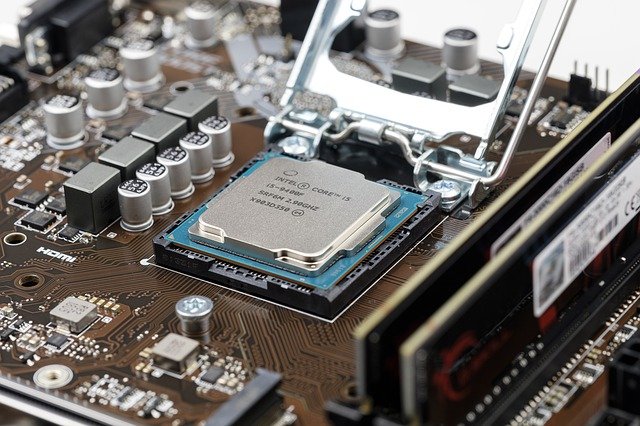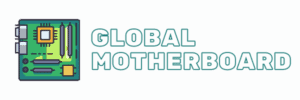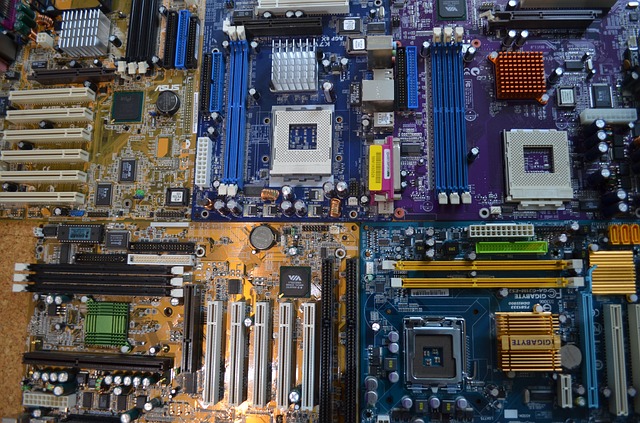We must take into account several concepts when choosing a motherboard for home use pc:
- Components: Buying a good board should involve choosing good components, for example phases and capacitors. Asus has its Digi + technology , Gigabyte the Ultra Durable and MSI the Military Class. We believe that they are the benchmark in the sector .
- Cooling: We must choose between passive cooling (without fans), with a fan or a kit with a combo with liquid cooling (For example, the Gigabyte Z170X SOC Force). Passive cooling is usually the smartest option, because it doesn’t incorporate the annoying little fan that eventually breaks down.
- Expansion ports: These are very useful for connecting graphics cards, external television controllers, sound cards,There are many types: classic PCI , PCI Express , or the current M.2 NVMe for high performance storage units.
What does the PLX chip do? Basically it gives us the necessary bandwidth to connect the largest number of graphics cards (3 or 4) at X16 or X8 speed between them.
- Storage:These are the connections that allow us to install state-of-the-art hard drives and SSDs . Speed is increasingly important in reading and writing these discs that are cheaper. In the last generations of boards (almost all current chipsets) we have found the SATA III , 2 connections and the wonderful M.2 NVMe connection that obtain astonishing MB / s rates , avoiding the messy storage and cable cables. data. In addition, the prices of these units are falling a lot, an example is the Samsung 970 EVO and EVO Plus.
- RAM memory: Very to take into account because it is not the same to acquire a motherboard with DDR3 modules or with the current DDR4 RAM . We can also take advantage of our RAM from the previous PC or we are interested in having higher speeds, voltage and latency. In this regard, the chipset is also an important element in determining what maximum frequency of RAM memory is capable of supporting.
- Rear connections: Sometimes we do not take this aspect very into account and we get some surprises. HDMI, Displayport, DVI, USB 3.0, USB 3.2 Type-C or Thunderbolt 3 connections for gaming peripherals are often very important in everyday use.
Top Best Motherboards For Home use PC List:
Below we have collect some of the best motherboards for home use pc which are high in performance.
GIGABYTE X570 AORUS Ultra
About this item
- Supports AMD 3rd Gen Ryzen/ 2nd Gen Ryzen/ 2nd Gen Ryzen with Radeon Vega Graphics/ Ryzen with Radeon Vega Graphics processors
- Dual Channel ECC/ Non-ECC Unbuffered DDR4, 4 DIMMs
- Direct 12 Phases IR Digital PowIRstage PWM
- Advanced Thermal Design – Fins-Array Heatsink & Direct Touch Heatpipe
- Triple ultra-fast NVMe PCIe 4. 0/3. 0 x4 M. 2 with triple thermal guards
- Intel WiFi 6 802. 11ax 2T2R & BT 5
- Rear 125dB SNR Amp-Up Audio with alc1220-vb
MSI MAG Z490 Tomahawk Gaming Motherboard
About this item
- Supports 10th Generation Intel Core / Pentium Gold / Celeron Processors for LGA 1200 socket
- Supports dual channel DDR4 memory up to 128GB (4800MHz)
- Lightning USB 20G is powered by the ASmedia 3241 USB 3.2 Gen 2×2 controller, offering never before seen USB speeds up to 20Gb/s from the Rear USB Type-C port
- Twin Turbo M.2 with M.2 Shield Frozr delivers transfer speeds of up to 32 GB/s for ultra-fast SSDs
- On-board 2.5G LAN plus Gigabit LAN
- Pre-installed I/O Shielding for convenience and protection from electrostatic discharge
MSI Arsenal Gaming AMD Ryzen
About this item
- Supports 1st, 2nd and 3rd Gen AMD Ryzen/ Ryzen with Radeon Vega Graphics and 2nd Gen AMD Ryzen with Radeon graphics/ Athlon with Radeon Vega Graphics desktop processors for socket AM4
- Supports DDR4 memory, up to 4133(OC) MHz
- Extended heatsink design: MSI extended PWM heatsink and enhanced circuit design ensures even high-end processors to run in full speed.
- Lightning fast game experience: 1x turbo M.2, amd turbo USB 3.2 gen2, store mi technology
- Core boost: With premium layout and digital power design to support more cores and provide better performance.
Source: amd.com
ASUS Prime X470-Pro AMD Ryzen 2
About this item
- Powered by AMD Ryzen 2 AM4 and 7th generation Athlon processors to maximize connectivity and speed with NVMe M.2, front panel USB 3.1 Gen2 and Gigabit LAN
- 5 Way Optimization with auto tuning and Fan Xpert 4 delivers advanced fan controls with an integrated AIO pump header for dynamic cooling. Operating System Windows 10 64 bit, Windows 7 64 bit
- Patent pending Safe Slot features an injection molding process that integrates metal framing for a stronger, firmly anchored PCIe slot built for heavyweight GPUs
- Aura Sync RGB lighting features a nearly endless spectrum of colors with the ability to synchronize effects across an ever expanding ecosystem of AURA Sync enabled products
- Industry leading 8 channel HD audio with Realtek S1220 A codec delivers a warm, full sound
- Turbo App, providing better CPU performance, efficient power saving, precise digital power control, whole system cooling and even tailor your own app usages.
GIGABYTE Z390 AORUS PRO
About this item
- Supports 9th and 8th Intel Core Processors
- Dual Channel Non-ECC Unbuffered DDR4, 4 DIMMs
- Intel Optane Memory Ready
- 12+1 Phases Digital VRM Solution with DrMOS
- Advanced Thermal Design with Multi-cuts Heatsinks and Heatpipe
- ALC1220-VB Enhance 114dB(Rear) / 110dB(Front) SNR in Microphone with WIMA Audio Capacitors
- Intel Gigabit LAN with cFosSpeed
Main connections that you should know about the motherboard of your Home PC
Socket M.2
These slots can be connected to the processor’s PCI Express complex using 2 or 4 Gen3 or Gen4 lanes on the most powerful boards, or they can also have a SATA III interface.
Internal USB and audio connectors
All motherboards have the odd internal connector to extend their USB port connectivity. A USB 3.2 Gen Type-C header is also available on the higher-end models.
In addition, there will be a connector for the 3.5 mm Jack ports that has the I / O panel of the chassis, on-board buttons, the LED debug panel.
TPM connector
The TPM connector is one of the additions that has been in all motherboards for years but few know of its existence and usefulness. With this connector we can install a small expansion board that will be in charge of providing us with access to our encrypted equipment with hardware protection. Fundamentally, it was introduced with the aim of giving functionality to Windows Hello, the authentication method by biometric characteristics of Windows.
Rear panel I / O connectors
Motherboards have connectors for different types of peripherals, usually located on a backplane that remains exposed at the back of the PC case when the tower is closed. Some motherboards have pin banks, which can be used to connect additional peripheral ports on the front of the computer case.
Power connectors
Every motherboard has at least one power connector. This connector is used to bring power from the main power supply to all installed components. Because some of today’s PCs have very high power requirements, some motherboards have additional ports for auxiliary power connectors. Generally we will find a 24-pin ATX connector and an 8-pin EPS connector.
Lighting connectors for the box
On the side of the motherboard closest to the front of the PC case are the case connectors, a bank of pins to which very small cables are connected.
Fan connectors
These connectors are specifically designed to connect to the CPU cooling fans and the PC chassis fans. The system BIOS monitors the CPU cooling fan speeds, and if the fan is not connected to this header, you may get an error when starting the PC. Many motherboards include secondary fan power connectors, these connectors are primarily used to power and monitor multiple case fans.

Size does matter on the best motherboards. Why?
Based on the domestic use of motherboards we can differentiate four formats :
- Format XL-ATXand E-ATX : These are special formats and involve the acquisition of a large tower with 10 or more expansion slots . They are ideal for mounting full liquid coolers, multiple graphics cards, and many storage drives.
- Standard ATXformat : Normally its measurements are 5 x 24.4 cm and it is compatible with 100% of PC cases on the market (Mid Tower or Semi-Tower).
- Micro ATXformat (mATX): It has a smaller size, but we do not find a great advantage . It is a very common format, but with the arrival of smaller motherboards it has been a bit out of place. Ideal for salon teams.
- ITXformat : Its arrival has revolutionized the world of motherboards and gaming equipment with really small dimensions and capable of moving 2560 x 1440p (2K) resolutions without messing up and even the highly demanded 3840 x 2160p (4K) with some ease.
AMD or Intel?
We see the 4, 6, 8, 12 and 16 cores of the Ryzen series (AM4) of spectacular performance and the 4, 6, 8 and 10 cores of the mainstream series of Intel (LGA 1200). What is better? It has been shown by active and passive that until now, Intel offered better performance (IPC) , but with the release of the new Ryzen 5000 this has turned around in favor of AMD, since these 7nm CPUs present incredible improvements performance in IPC and especially in multicore, which even exceed Intel’s top-of-the-line range.
It has been forced to implement multithreading throughout its range and more cores, and the truth is that in games it is still not bad, since they still perform a little more than the AMD in this territory.
Another issue is if we want a Low Cost PC and here we believe that AMD has no rival. Currently they offer us their APUs and PC configurations with socket AM4 . They are good, they have very good integrated graphics card ( iGP ) and their A320 motherboards are very cheap ( less than 60 euros ). For less than 300 euros they have a complete team working at home.
Overclock
The overclock is the increasing frequency (MHz) the internal components of the computer. Usually it is done to the processor and the graphics card. This increase implies exceeding the operating characteristics specified by the manufacturer. In this way we can increase the performance and speed of an electronic component without having to buy a more powerful one. All electronic components are susceptible to being overclocked. The motherboard has an essential function with the processors, since, if you have better components, therefore, you will have a better chance of getting the most out of it. If you are going to overclock these are chipsets that we recommend.
- Intel: Z590, Z490 (Comet Lake and Rocket Lake), Z390 (Coffe Lake), X299 (Kaby Lake-X and Skylake-X and X299X (X299 optimized for Cascade Lake).
- AMD: 990FX (AM3 +), B450, B550, X470, X570 (AM4), X399 (socket TR4) and TRX40 (Threadripper 3000).
By overclocking a processor, what we are achieving is, if for example it is capable of reaching a maximum of 4 GHz, we are going to make it reach 4.8 GHz. In this way it will be able to perform more calculations per second and with this we will obtain an improvement in performance in our team.
If overclocking the processor is not a primary option in your computer, save a few euros on the Intel platform with the Intel LGA 1200 chipsets H and B. The latter is the most interesting on the market, since it offers everything a gamer or enthusiastic user.
We must also bear in mind that a blocked CPU cannot be unlocked to overclock it, this is something that the manufacturer determines in the architecture of the processor in question. To overclock a blocked processor, we would have to increase the frequency of the front bus, which is the data bus of the motherboard itself. This practice implies possible failures and reboots in our system and the performance improvement is practically negligible.
On the other hand, manufacturers like Intel have a range of factory unlocked processors with the “K” badge on the model. So a CPU that has the K after the number will be an overclockable CPU. AMD for its part has the entire Ryzen and Ryzen Threadripper range with unlocked multipliers , making them the best processors for overclocking.
The importance of improved components
As you have seen in our latest analysis we have found that the new trend for manufacturers is the integration of sound card, network card and chip to improve speed. This is a great evolutionary step when it comes to new motherboards and avoids us connecting a multitude of expansion cards, but normally it is subjected to an increase in the cost of the motherboard.
For Gaming users, I would recommend taking into account the incorporation of LAN Killer network cards that improves ping and latency in your game . And high-end sound cards with built-in headphone amplifier . Without a doubt, having a good DAC inside the internal sound card gives us a lot to connect high-end equipment.
The incorporation of new connectors such as USB 3.2 Gen 2 × 2 or M.2 that work at high speeds, are already necessary today for any motherboard we buy. Since we spend the money, at least it is worth it.
But we not only have to talk about connectivity, it is also very important to have quality internal components, such as the power phases (VRM), which are responsible for powering our processor and RAM. Many of them, if not most, already incorporate heatsinks in these phases to cool them and thus preserve their integrity, for example, against users who want to overclock .
For lighting enthusiasts , they may also appreciate purchasing a board with a built-in RGB lighting system. It will not make us raise the FPS in games or anything like that, but there are many who highly value this type of technology in gaming boards, to be able to synchronize them with the rest of the lighting of their chassis or other components.







